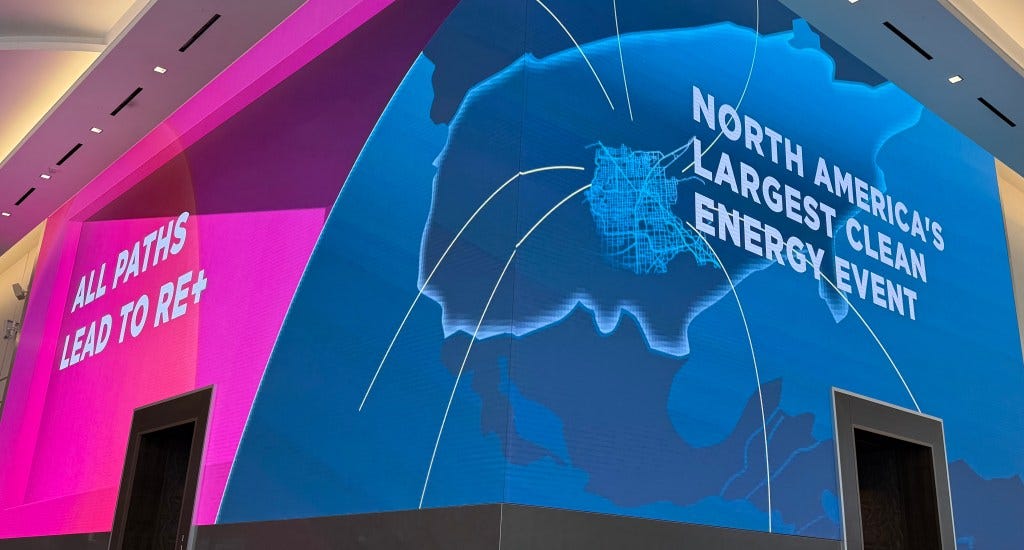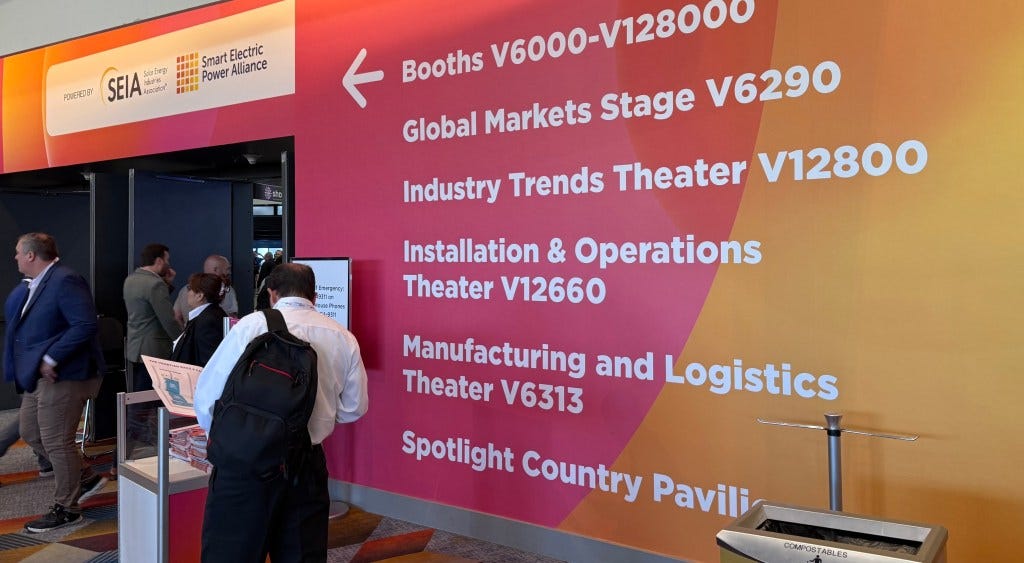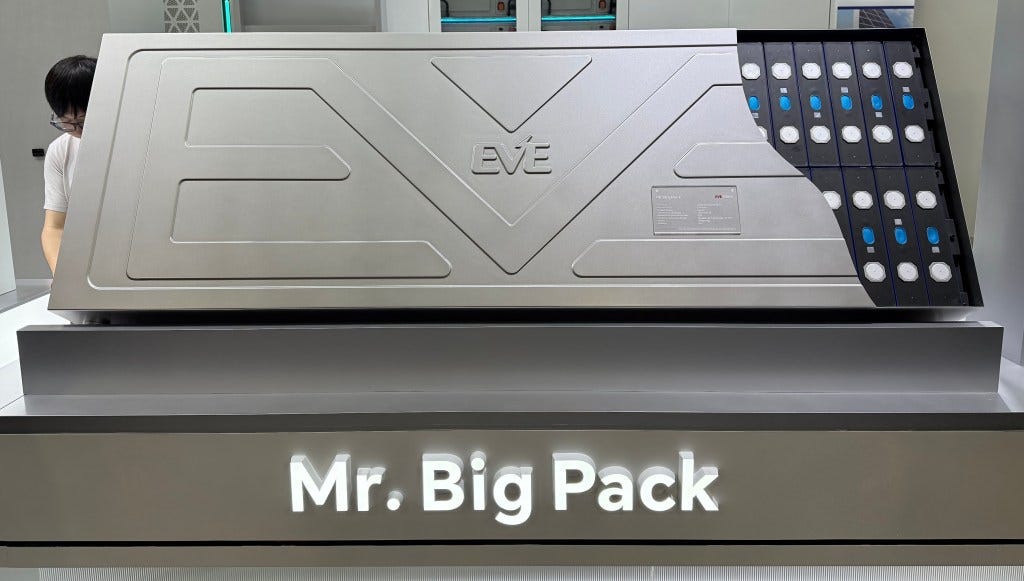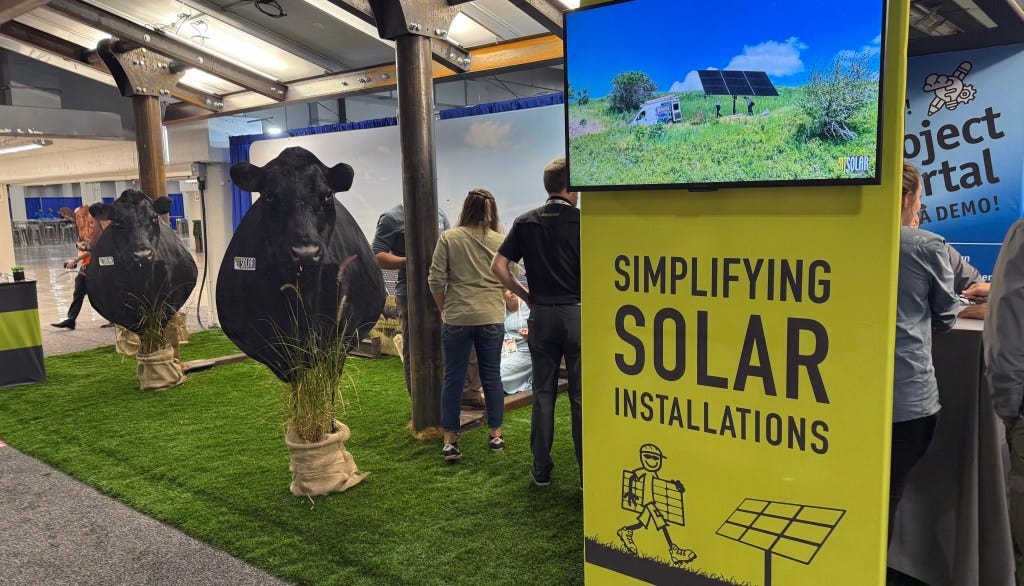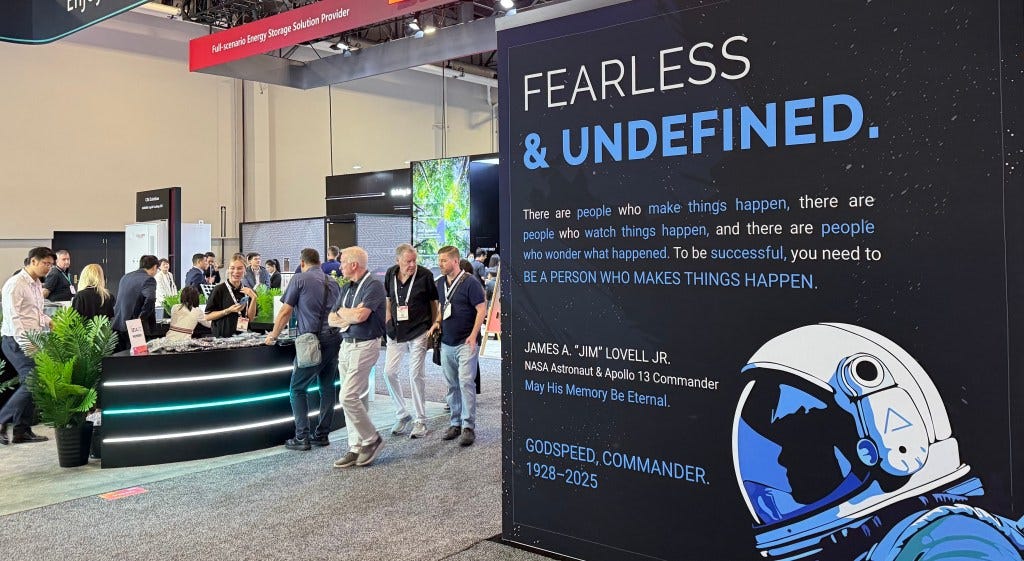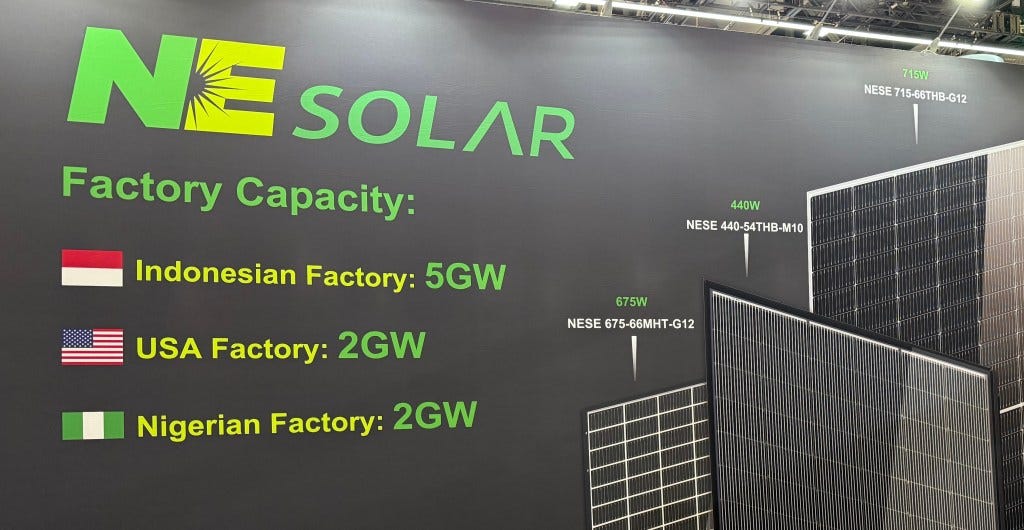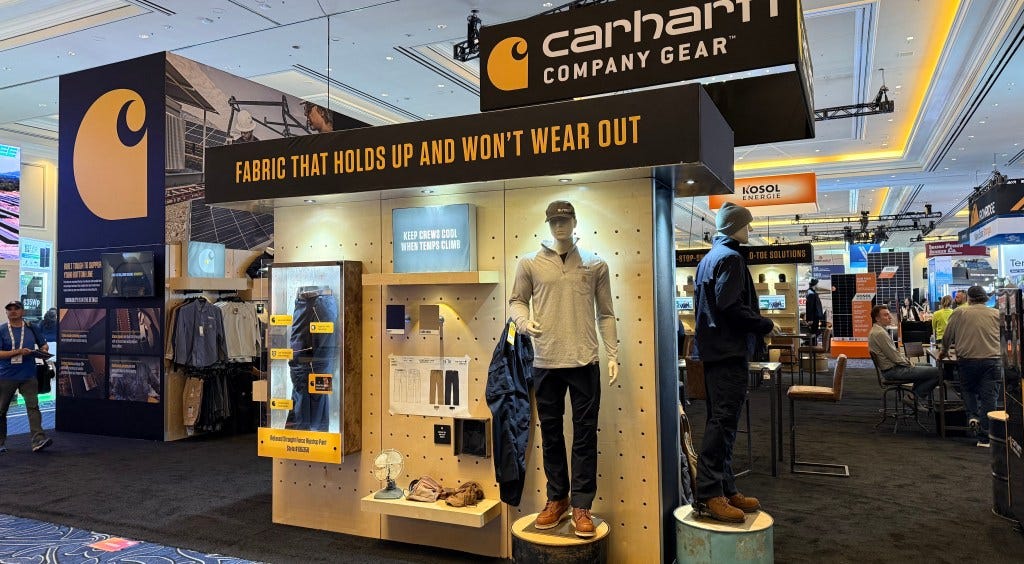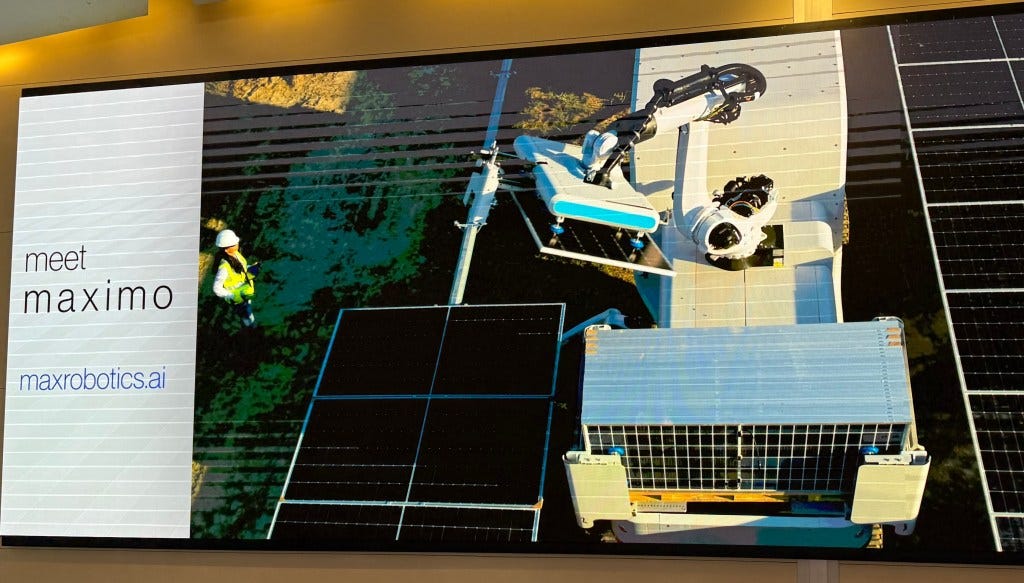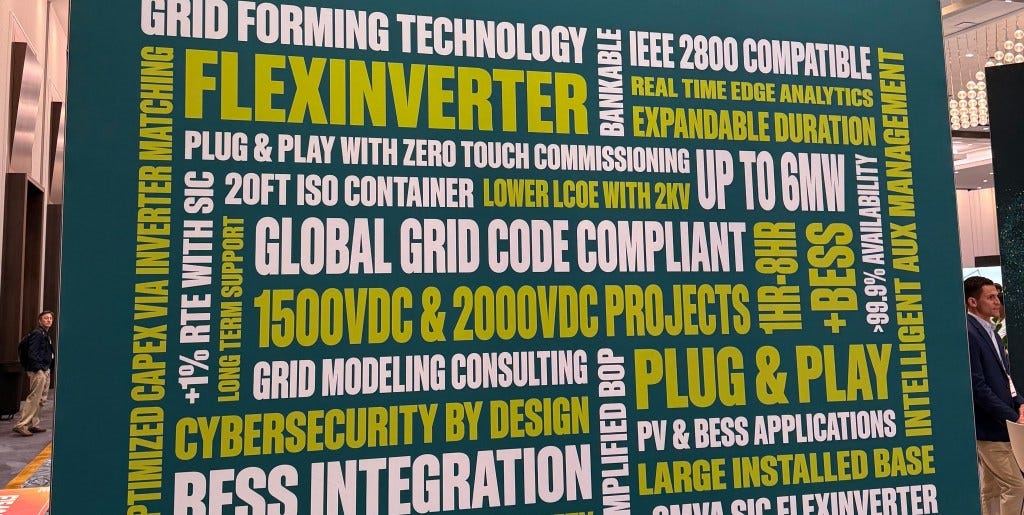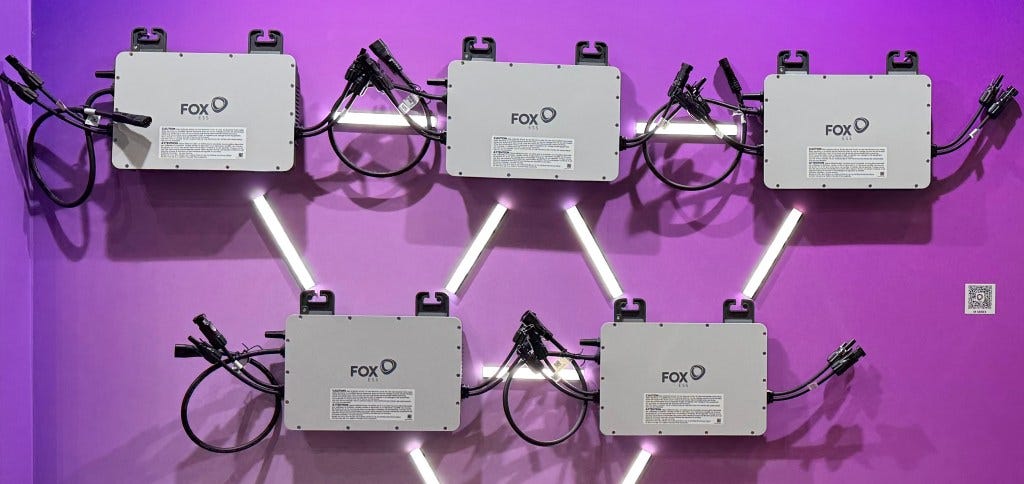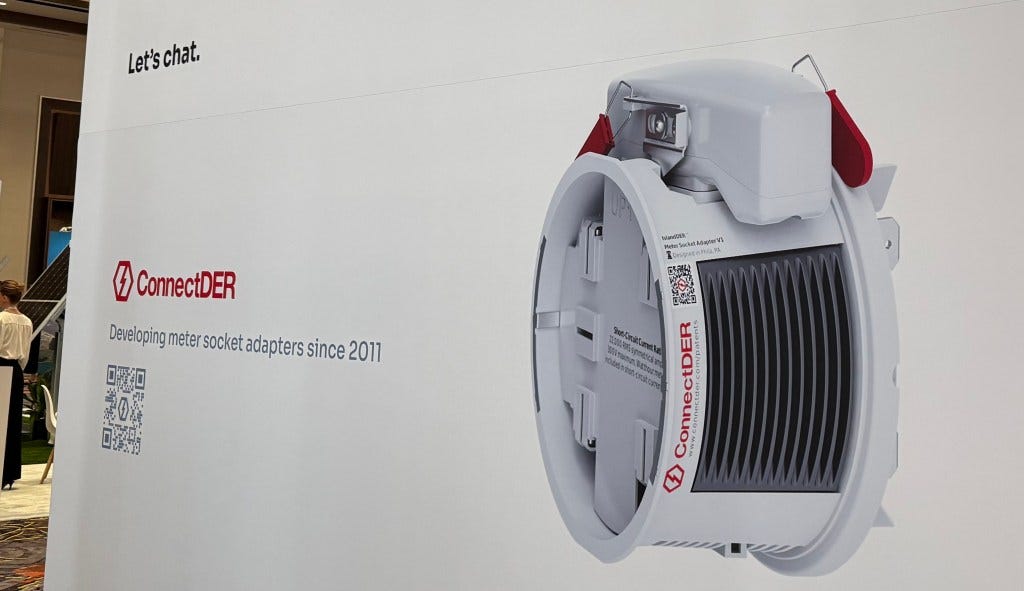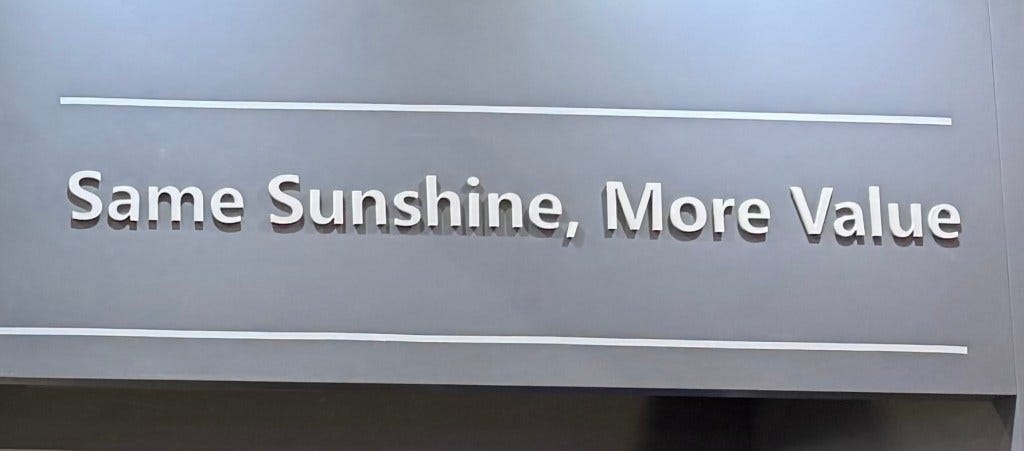Solar And Storage Are Surging, And More Takeaways From RE+ In Vegas
The conference was huge, and the vibe was awesome.
How's the U.S. solar industry reacting to new policy headwinds? I went to Las Vegas last week to find out, at the country’s biggest renewable energy conference, RE+.
And wow... I had no idea how big and vibrant this conference would be. With 40,000 attendees and 1300 exhibitors, it sprawled from one massive ballroom to another across both the Venetian and Caesar’s Palace. It was just massive rivers of people, and lots of cool technology everywhere you looked.
Here’s my key take-aways:
1) Solar keeps growing... because we need the power.
The overall vibe of the conference was that solar's in the race, the market opportunity is huge, and it's all about how fast we can deploy it.
Most large scale solar + storage investments planned for 2025-28 are still moving forward, albeit with new headwinds (supply chain, tariffs, tax credit expirations) on top of the old ones (transformer and workforce shortages, long waits for grid interconnections).
And the reason is simple: after decades of flat demand, America's electricity needs are surging due to huge AI data center buildouts and other electrification (EVs and manufacturing growth). For meeting that demand, solar's the only cheap, rapidly-deployable game in town, because the backlog for new gas plants is 5-7 years or more. And solar's now even more cost-competitive thanks to batteries.
I talked to a wholesale power trader from a $75 Billion hedge fund who told me he sees the next few years as a race between solar + batteries and gas plants. He doesn't think any one power generation technology - or even all of them - can meet the surging demand. So he thinks prices will continue rising, especially at night, since daytime solar is the cheapest form of power generation.
2) Storage is surging, because it's a game changer for everything electric.
If solar panels are the face of clean cheap power, battery storage is increasingly the heart, the brains, and the courage (forgive the analogy... The Wizard of Oz is at the Sphere, and the advertising is everywhere in Vegas). A huge chunk of the conference was focused on the booming market for battery technologies, from giant grid-scale batteries to small portable power packs.
Batteries, paired with inverters and other intelligence, can increasingly do it all: time-shift power, provide the grid's frequency heartbeat and make sure things stay up and stable when stuff goes wrong (traditionally the role of fossil fuel plants). Batteries don't just improve the economics of individual grid assets (like solar plants); they serve as market makers for the entire grid, balancing real time supply and demand, killing peaks, and providing resilience.
Most companies at this conference seemed to be realizing that if they didn't already have batteries in their product offering, they probably should.
3) It's all coming from China... for now.
The conference was in Vegas, but it often felt like I might be in China. Which makes sense, because China thoroughly dominates all things solar, storage, electrification and e-mobility these days. In almost every conversation I had, China came up pretty quickly.
I talked to the CEO of an Indian solar panel manufacturer, trying to break into the U.S. market (they sell mostly in India right now). Right now all his silicon wafers and solar cells come from China. So does all his machinery, which embeds the module designs and IP. So every time he wants to upgrade his panels based on new more efficient technology, he has to buy a whole new set of machines from China.
I talked to Jackery, a leader in small portable batteries for campers and RVs, now moving upmarket into whole-home backup. They were teasing a balcony solar prototype. The product manager was a young guy based out of Shenzen, with incredibly detailed knowledge of the American market. Turns out they're a Chinese company, though they don't promote that fact (most consumer-facing companies don't).
And I talked to a Tesla employee who complained it's become challenging to sell their utility-scale Megapack batteries against much cheaper, good-enough Chinese competition. "Say you're a utility-scale developer," he said, "and for the price of the Megapacks for your project you could get Chinese batteries plus a private jet worth $20-30 million. Who wouldn't take the jet?" (He did note that the developers don't actually get the jet, just the cost savings).
As consumers we all benefit from this. But in my opinion we need to get serious about investing again in American (or other non-Chinese) innovation and production capacity in these areas. Otherwise we're just handing over control of some of the most strategic technologies of the future to China.
4) The race to cut installation costs is on.
Product innovation and simplification are the key to reducing deployment (installation) costs, making electricity cheap, and tipping the economic scales decisively away from fossil fuels. And it's happening... but needs to go faster.
On the grid/utility side, lots of companies are working on improving tracker hardware to reduce installation costs, using AI to optimize designs, hardening grid-scale systems to be more resilient to weather, fire, etc.
But the real action is at the grid edge (e.g. residential, commercial and industrial), where lower installation costs can crack open a much bigger market.
For years, these markets were just about slapping solar panels on a building and hooking them to the grid so the owner could sell power back to the utility. But this was a low-value service, and installation cost too much, so payback periods were long. Worse, many installers found that the best way to profit was to trap customers into paying inflated financing (or lease) charges and fees.
Today, there's a new product, solar + storage, which lets you produce and consume your own energy instead of buying it from the grid. But payback periods are still too long. Yes, utility rates have gone up quickly (so shorter payback) but so have interest rates (longer payback), and the more complex product costs even more to install (longer payback).
The answer is product simplification, to make these new systems much cheaper to install. And it's happening: Integrated inverters with batteries so installation involves fewer boxes. Meter collars to avoid expensive utility service upgrades. Whole-home backup to avoid the additional need for a gas generator. And smart software that lets these systems to consume the least grid power possible, and only sell power back to the grid when the price is high.
5) We need 'permissionless' products to break the utility monopoly.
For quicker scaling, we need an even bigger cost/benefit breakthrough: lightweight systems which can deliver most of the benefit at a fraction of the cost. Systems you can just buy at Home Depot and plug in yourself (without costly permits or permissions) to start saving money. Spend $3,000 instead of $30,000, and get half the utility bill savings at a tenth the cost. In Europe this is called balcony solar. I pay 45 cents a kWh (average) here in California, and I want this badly.
Lots of vendors are trying to figure this out for the U.S. Today you can buy all the components off the shelf - a few cheap solar panels, an inverter, and maybe a battery. The problem is the 'plugging it in' part: this gets pretty technical. There's potential safety issues (which seem to have been resolved in Europe) and the National Electric Code has so far refused to even consider sanctioning such systems. But Americans are starting to do it anyway, just the same as they buy backup generators without permission, or bought satellite dishes back in the day before cable TV, or VCRs before streaming.
Stay tuned for more permissionless breakthroughs in residential solar. Because that's what happens when there's big money to be saved and a monopolist (i.e. the grid) trying to prevent you from saving it.
6) The trade wars are making everybody crazy.
Tariffs and trade wars are making everybody crazy right now. One developer told me: "Transformers have been hard to get for years, so we bought some transformers from Denmark, and shipped them through Brazil. Now they're stuck in Brazil, and we can't get them here." Stories like this were everywhere.
7) The U.S. workforce needs a miracle.
The U.S. has a shortage of labor to deploy new power plants and electrical infrastructure, specifically electricians. One municipal utility board member (SMUD) put it like this: "We have plenty of potential electricians in this country," he explained. "The problem is, they're all in sixth grade." He said SMUD started a program to train electricians for free if the graduates would work for SMUD afterward, expecting hundreds of graduates. "But we only got one guy."
8) Or maybe robots are the answer.
To plug the workforce shortage, there were plenty of robots on display at the show, designed to do everything from install solar panels in the desert to keeping them clean afterward. And there was plenty of talk about AI to help the robots. I have no idea how much of this automation is actually working, but it's clearly attracting lots of investment.
9) People are finally giving microgrids some respect.
Microgrids, and the folks who design them, are finally starting to get some respect. Because the fastest way to power up an AI data center right now is with 'behind the meter' generation: rather than waiting for grid power, colocate the data center with private solar, storage and thermal generation (gas or diesel). In other words, a microgrid, but with big dollars attached. Because of those dollars, microgrids are suddenly in the spotlight.
10) The AC vs. DC debate is everywhere now.
DC seemed to be on a roll at this conference... there were lots of companies pitching DC microgrids, DC bidirectional car charging, DC air conditioning, DC everything. But AC is still the world we (mostly) live in. The debate is heating up because it's getting easier and cheaper to convert from one to another, and there's more electricity flowing through both. Who knows how this will end, but if you want to wind an electrification person up, just try telling them that either AC-coupled or DC-coupled are definitely better.
11) The meter collar wars are on.
For months I've been hearing about new meter collars from Tesla, Enphase, Span, Solar Edge etc., and wondering if they're a new battleground for home energy control, or a big nothing. After talking to vendors, I think battleground. They enable your home system to disconnect from the grid if needed and prevent it from pulling or pushing too much juice to or from the grid. But the vendors are racing to grab market share, and griping about each others' implementations ('theirs isn't open, doesn't share data well' etc). Stay tuned for the meter collar market wars.
12) Chinese marketers have the best slogans.
It's easy to laugh at the Chinese company marketing slogans at a show like this. But I changed my mind when I saw this slogan: "Same sunshine, more value." That's it! You just can't say it better.
I'm becoming a fan of these simple Chinese slogans; they're much more resonant than the overpolished western MBA stuff. Some of my conference faves: "Smart power, better life" - "Create amazing life by battery" - "Dedicate to green energy" - "Energy links future, photovoltaic drives life" - "Turning every upgrade into a journey of dreams." That's what I want... a journey of dreams!
But wait, there's more (photos).
You had to be there to experience this conference in all its depth and diversity and excitement. But since you probably weren't, I’ve posted even more show photos on DaveMargulius.com, check them out.


